
An Ineos car cover is not just a tarp for sun and rain. It is a miniature microclimate that surrounds your Ineos every time you step away from the wheel. In the United States, Ineos owners often move between “difficult” weather zones: scorching noon in the Sun Belt, steady drizzle in the Pacific Northwest, sandblasting winds in the Desert Southwest, or salt-laden air along the coast. Left uncovered, paint, glass, black plastics, chrome and rubber seals are constantly stress-tested by UV, heat, moisture and fine dust. Over time, exterior details lose luster, glass develops chalky water frames, the cabin grows musty and paint shows fine swirls. When you use the right Ineos car cover designed around the physics of sun, water, wind and salt, you cut the cause at the source. The outer face beads water so droplets leave quickly, a micro-vented core lets vapor move upward instead of being trapped, an ultra soft liner turns each touch into a gentle glide, and a model-correct form keeps the cover still even in crosswinds.
Related Articles: Hyundai car cover: New fabric technology for sun, rain, snow and scratch protection
Ineos and off-road DNA: rugged, accessory-rich, and therefore deserving of a cover that works on the right mechanism

The appeal of Ineos (Grenadier, Quartermaster) lies in its durability and form: near-upright glass, a flat roof, square flanks, high clearance, and a host of exposed features such as roof racks, ladders, spare tires, recovery hooks, winches, hinges and snorkels. Those “exposed muscles” let you travel deeper into trails, yet they also create many landing points for sand, water and sea salt. Large flat surfaces and upright glass are exactly where wind forms air pockets, causing a loose cover to balloon and collapse, dragging fine dust back and forth like invisible sandpaper. If the fabric is too airtight, the space beneath acts like a greenhouse; if the liner is stiff or coarse, each on and off becomes a micro-abrasion cycle. Instead of “the thicker the better,” the Ineos car cover worth investing in follows four principles: shed water (beading), breathe evenly (micro-venting), touch softly (ultra soft liner), and stay still (stable form with recessed seams and soft hems). When these principles align, the vehicle stays beautiful because it is less exposed to harmful conditions, not because you corrected damage afterward.
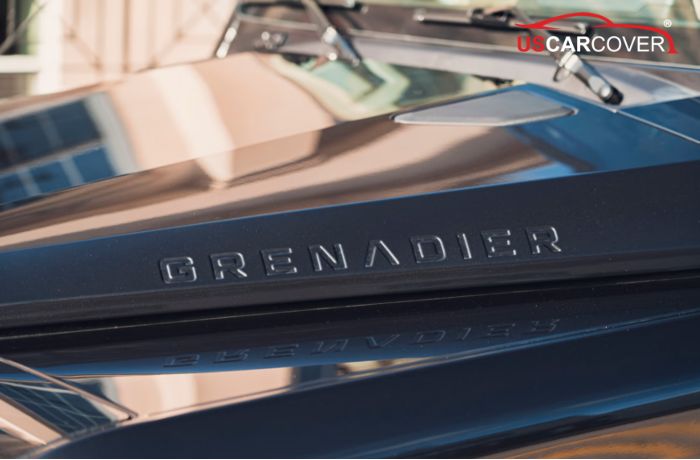
Related Articles: Hupmobile car cover: full coverage, interior protection, anti-mold and anti-rust to keep your car looking new
Sand, desert and strong wind: do not let fine dust plus wind movement turn into sandpaper on paint

Stand next to your vehicle on a windy day in the high plains or desert and you will see fine dust covering every surface, from the hood to the windshield. The problem is not the presence of dust but how it moves when wind slips under a cover. If the cover does not hug the body, wind creates pockets that inflate and collapse repeatedly. In that motion, particles such as pollen, fine sand or wildfire ash are pulled back and forth, leaving a web of micro-swirls on broad, flat panels where sunlight reveals them most.
You can shut down this “swirl machine” by choosing an Ineos car cover with a stable, model-correct form and recessed seams. When the pattern is cut for Ineos geometry, the cover naturally suppresses air pockets at the nose and rear glass, so it does not “puff out” every time the wind shifts. Soft hems prevent hard edges from pressing into upright glass, and an ultra soft liner turns every tiny adjustment you make into cushioned contact rather than friction. In areas with sand-driven winds like the Desert Southwest, a beading outer face is also useful. With even a light night dew, droplets roll off and carry settled dust to the edge, helping the cover clean itself without scrubbing.
When you park briefly at midday during a trail day, you can prioritize shading the glass and roof to drop cabin temperature quickly and reduce fine dust entering the cockpit. For overnight parking in wind, cover the entire vehicle to lock out the dust plus movement scenario before it starts.
Related Articles: Hummer car cover for indoor or outdoor: choose based on needs, climate, parking context, and off-road frequency
Showers, mud and mineral spotting: shorten wet time and avoid trapping moisture under the cover
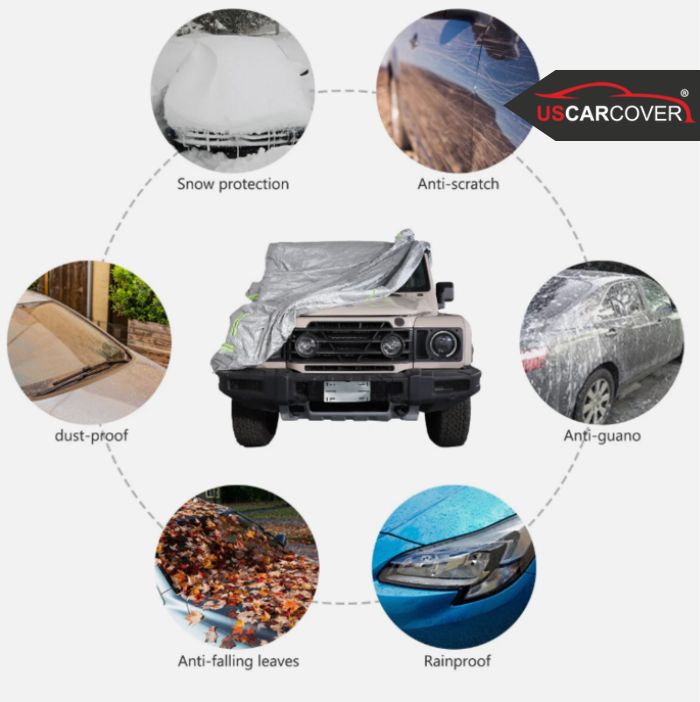
After long, damp spells in the Pacific Northwest or Midwest, droplets often linger at glass edges, trim and hinge pockets. As water evaporates, minerals dry into white frames at the glass edge. If the cover is too sealed, vapor remains trapped, leaving the underside clammy, the cabin musty and chrome dulling faster than expected. With Ineos featuring many exposed metal parts, dirty water and mud have plenty of places to settle, turning overnight into a “slow cooker” for trapped humidity.
The most effective approach is not wiping every mark each morning, but making water unable to stay long enough to cause damage. An Ineos car cover with a beading outer face will make water contract and roll away along the slope of glass and hood. When wet time is shortened, mineral spots lose their foothold. At the same time, a breathable core gives vapor a path from the vehicle surface into open air, keeping the underside dry across days rather than cycling between dry and clammy as airtight fabrics do. This second part matters more than most people think. Staying dry is how you remove the musty odor from the cabin without masking it with fragrances.
During windy rain, cover stability is another key. When the cover remains still, fine dust is not dragged across paint. If your driveway uses sprinklers, a few days with a beading and breathable cover will make the glass-edge frames disappear. And of course, before covering after a muddy day, rinse off thick mud along the sides and wheel arches. You are defusing the risk that dried mud turns into abrasive grit when wind starts pushing.
Related Articles: Hudson car cover: Scratch protection, rain beading, fast moisture release, lasting chrome shine, fewer water spots on glass
Harsh sun, UV and total heat load: reflect radiation to cool the cabin and slow material aging
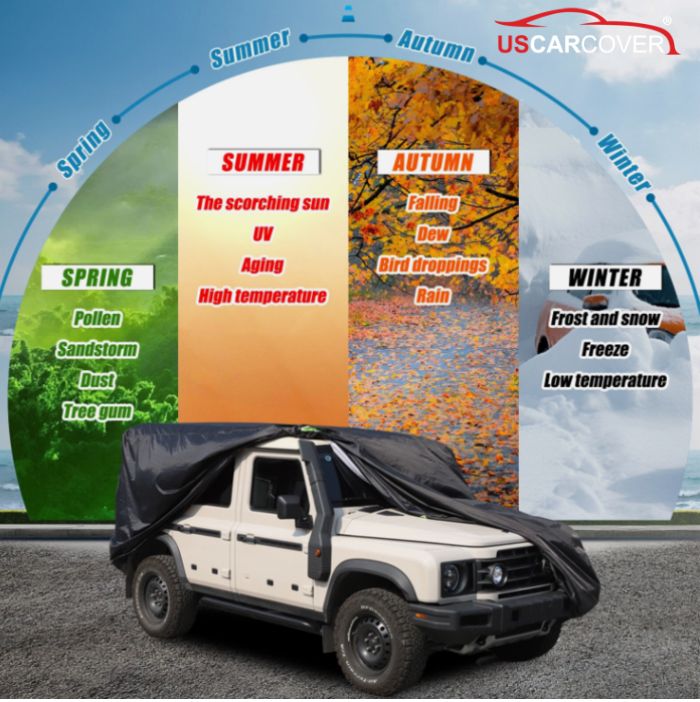
In the Sun Belt, the “open the door and it feels like an oven” moment is very real. UV breaks polymer chains in black plastics, making them gray out. High heat dries leather and cloth, while adhesives under veneer and around glass degrade more quickly. On Ineos, upright glass and a flat roof contribute to a larger heat load if parked at noon. Many owners instinctively choose dark, thick fabric thinking it will “block sun,” but dark material absorbs radiation and re-radiates it downward, and thick, non-breathing fabric traps heat against the surface.
You can reverse that by using an Ineos car cover with a reflective outer face and a breathing core. Light, reflective fabric cuts the heat entering the cabin. A micro-vented core allows warm vapor to escape, resisting the hot, humid greenhouse effect beneath the cover. With an ultra soft liner, each midday on and off is not a rough rub across the paint. When roof and glass are shaded, the cabin cools quickly, screens and the dash suffer less thermal shock, black plastics hold color, and rubber seals avoid that hot plastic smell. That is not only about comfort when you get in; it also stretches service intervals for interior materials and lowers yearly costs.
Related Articles: Honda car cover: rain resistant, strong UV protection, cooler cabin, durable paint and interior
Coastal air, sea spray and salty rain: break the salty greenhouse before pitting begins
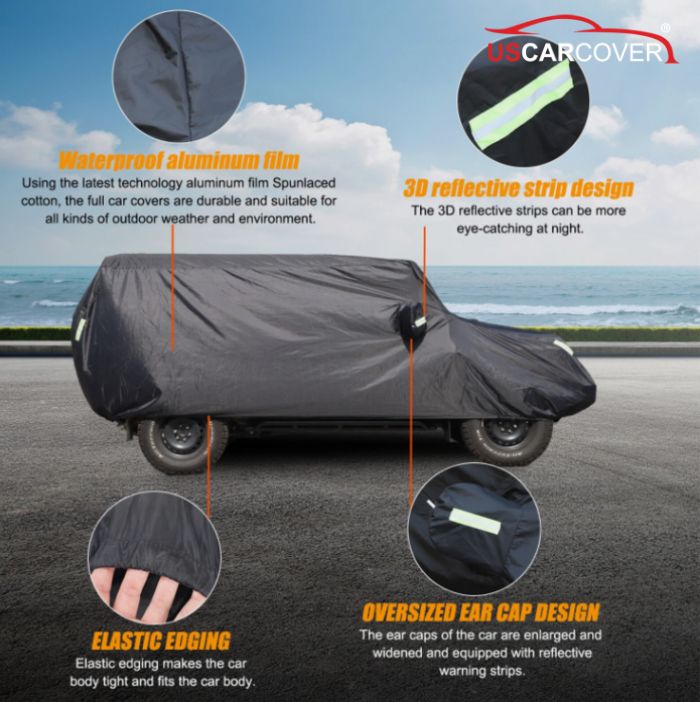
If you park near the ocean in Florida, along the Gulf Coast or by the Pacific, the real threat is salty humidity. Salt is highly hygroscopic. When it sits on chrome, hinges, exterior bolts and recovery hooks inside a sealed space, it accelerates pitting in just a few weeks. Coastal wind is rarely gentle, and a loose cover moves continuously, allowing salt particles to rub and draw faint lines you dislike seeing.
The solution begins with breathing. When an Ineos car cover has a true micro-vented core, the space beneath has air exchange and salty humidity is not “locked in.” Combined with a beading outer face that shortens wet time, salt has fewer chances to linger in seams and edges. The rest is a simple habit. Each time you remove the cover, give it a light shake to drop salt before rolling it up. After several days in coastal conditions, rinse quickly with fresh water and let it dry before storage. A correct form with recessed seams and soft hems will remain still in coastal winds without over-tightening, so the flat glass panels of Ineos do not get “edge prints” after hours of exposure.
Related Articles: How to choose a GMC car cover for Urban areas, the Sun Belt, the Snow Belt, coastal regions, and high-wind plateaus
The four tiers of a good Ineos car cover: each tier doing its job
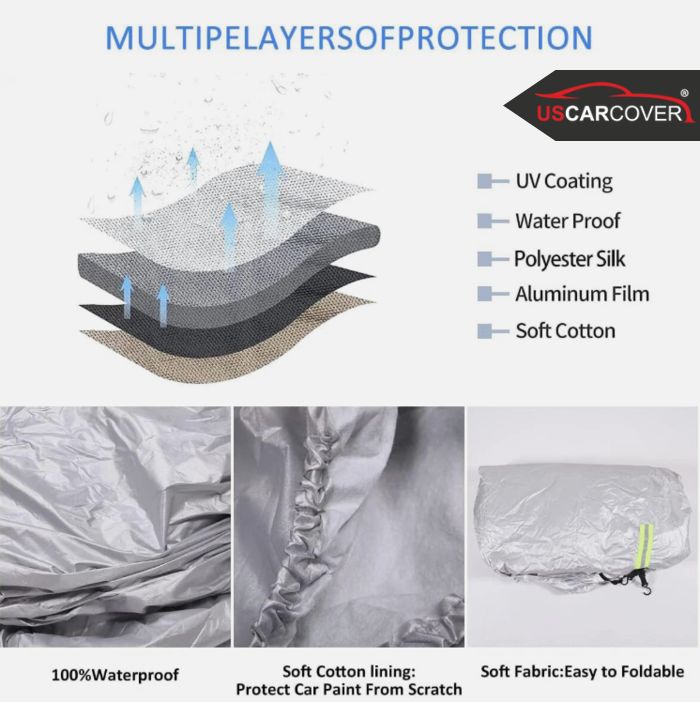
A well-built Ineos car cover typically uses four tiers, and each has a clear role:
- Beading outer face: rather than spreading water into a film, the surface makes water bead and roll away along the slope of glass and hood. When droplets leave quickly, wet time shortens, which cuts the root cause of mineral spotting and corrosio.
- Breathable core: a network of micro-pores guides vapor from below to above, without letting rain wick downward. Thanks to that one-way flow, the underside stays dry across days rather than cycling between dry and damp.
- Ultra soft liner: the layer contacting paint, glass and chrome is brushed and color-stable. It feels gentle even on fresh paint or surfaces protected by PPF or ceramic coating.
- Stable form with recessed seams and soft hems: the pattern is cut for Ineos geometry including racks, ladders, spare tires and snorkels, so it suppresses air pockets and avoids ballooning. Recessed seams hide edges so they do not press into glass. Soft hems prevent lines along crisp creases.
These tiers are not marketing adjectives. They make daily use easy and intuitive. When a cover is simple to use, you actually use it, and only then does protection compound over time.
Related Articles: Hillman car cover: preserve value and extend vehicle lifespan, reduce repair and maintenance costs
Real-world situations you often face and how the Ineos car cover resolves them cleanly
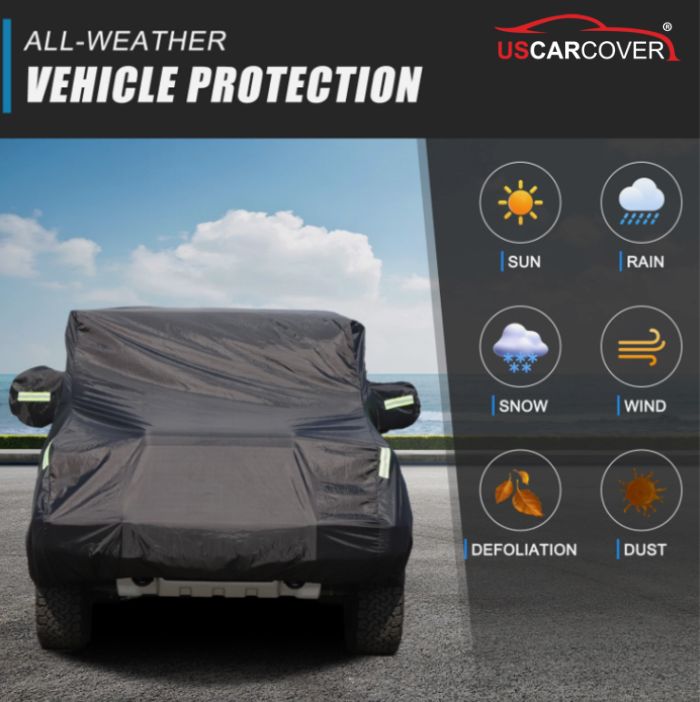
- Overnight at a windy, sandy trailhead: in the morning you see fine swirls and a dull windshield. With a form-correct Ineos car cover using recessed seams and soft hems, the cover stays still so dust is not dragged. The ultra soft liner kills repetitive friction when you fine-tune the fit.
- Night rain plus morning sprinklers: glass edges show white frames and the hood has hard water marks. A beading surface pushes droplets to leave quickly, while a breathable core keeps the underside dry across days. The frames fade after a few days.
- Coastal wind and salt: chrome and hinges dull noticeably after a few weeks. Breathability breaks the salty greenhouse, beading shortens wet time, and the habit of shaking off salt before storage slows accumulation.
- Sun Belt at noon: the cabin is scorching and black plastics fade. A reflective outer face and roof plus glass shading lower cabin temperature quickly. Screens and the dash suffer less thermal shock.
You will notice the common theme. When the conditions that form damage are removed, such as long wet time, micro-movement and salty humidity, the rest becomes easy to control.
Where to buy a trustworthy Ineos car cover
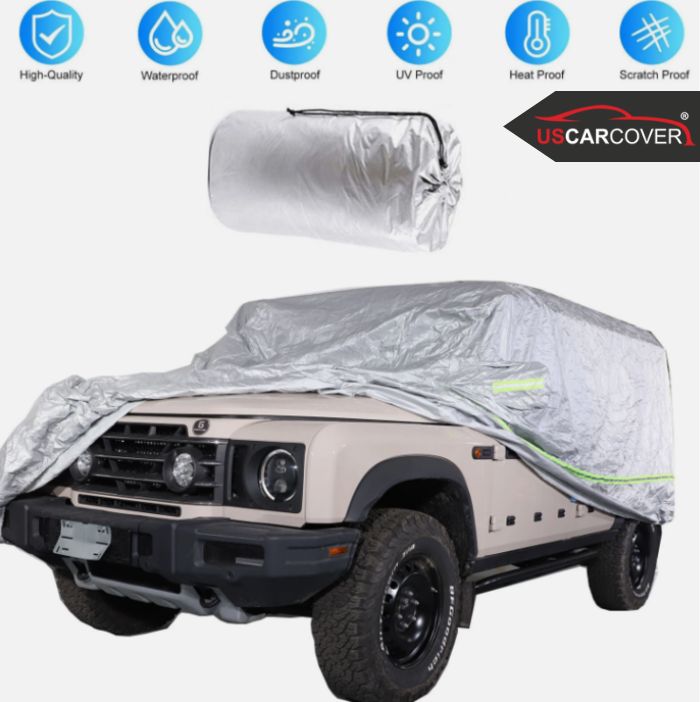
When you want a cover you will actually use every day, you need a place that understands U.S. climates and understands your Ineos. US Car Cover is a solid destination because they focus on what makes a difference in real use: guidance by region (Sun Belt, Pacific Northwest, Gulf Coast, Snow Belt, high plains wind), materials with stable water beading on the outer face, a truly breathable core, and an ultra soft liner that is safe on fresh paint, ceramic coating or PPF. A major advantage is custom-fit for Ineos. Patterns are cut with roof racks, ladders, rear spares, snorkels and other exterior accessories in mind, which suppresses air pockets and keeps the cover still without over-tightening. Clear fulfillment and return policies, plus practical usage advice for short midday stops, overnight parking and multi-week storage, make it easy to form the “clean, dry, light and stable” rhythm. When the cover is engineered on the right mechanism and cut to the right form, each install and removal is quick and tidy, so you truly use it instead of forgetting it in the cargo area.
Related Articles: Graham car cover: long-term storage solution with ultra soft liner, recessed seams, and breathability
Four qualities, one mechanism, one goal
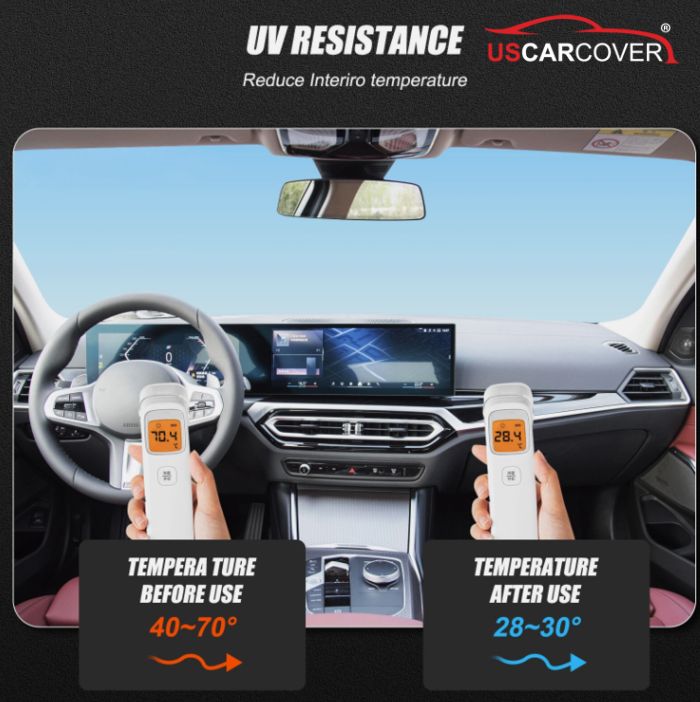
Everything a good Ineos car cover should do can be summed up by four qualities. Beading to cut wet time. Breathability to avoid a damp greenhouse. Ultra soft liner to stop repetitive friction. Stable form to stay still in wind. These four operate through a single mechanism: remove the conditions that form damage, such as long wet time, micro-movement and salty humidity, and drive toward one goal. Your Ineos ages slowly day after day, whether you park in sandblasting desert wind, steady muddy rain, harsh noon sun or salt-heavy coastal air. Once you choose well and use it correctly, the “harsh environment” becomes nothing more than a backdrop, while your vehicle keeps the look and value you intended to preserve.
